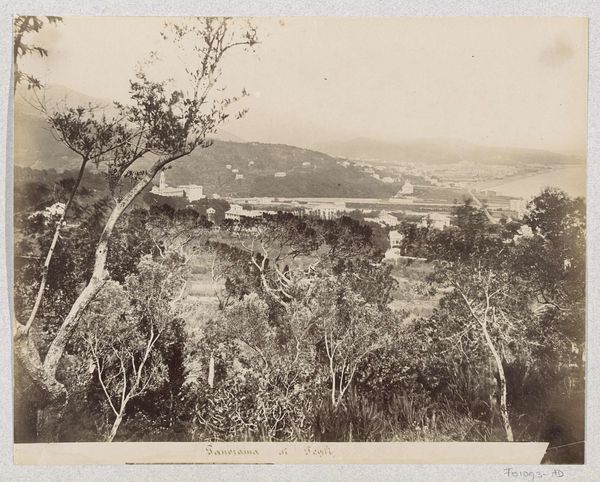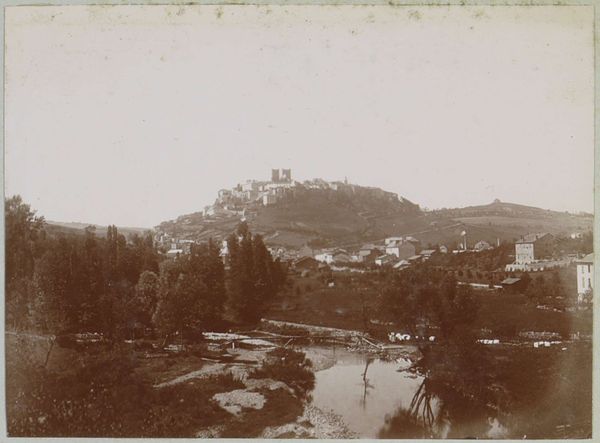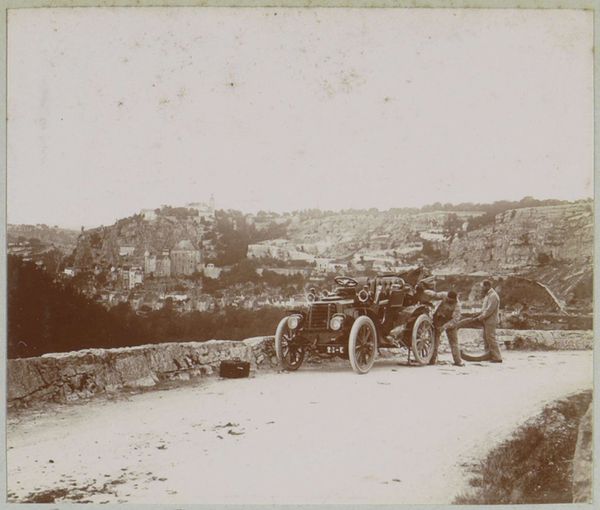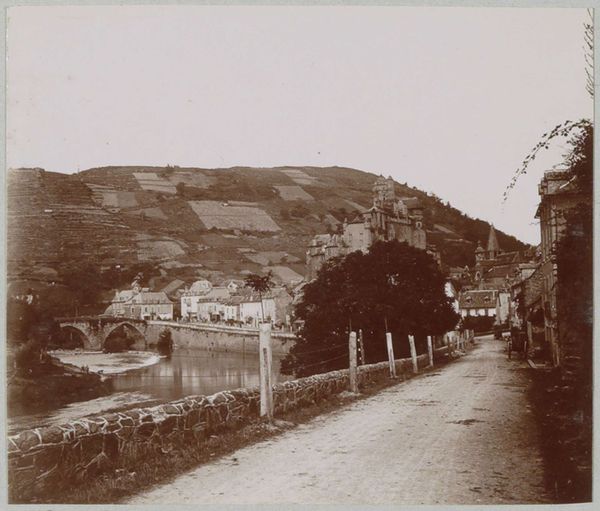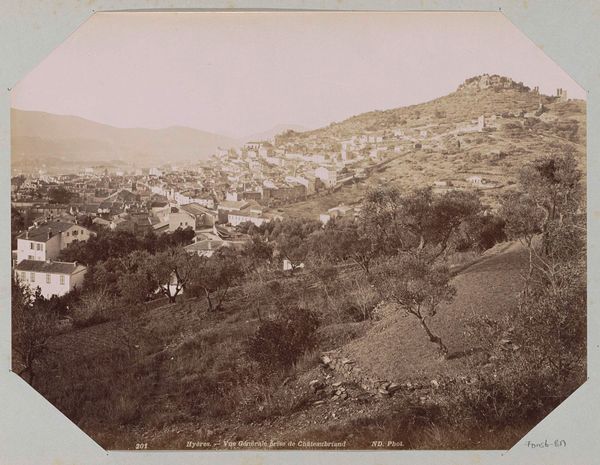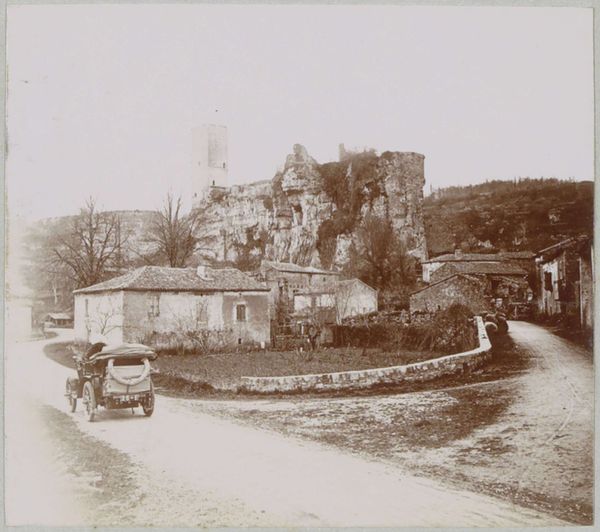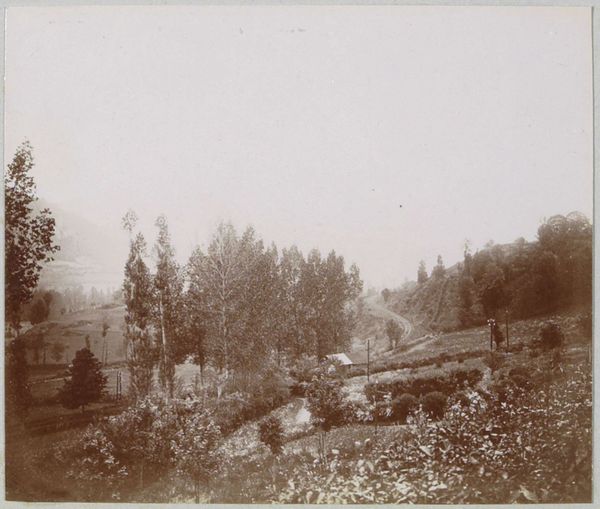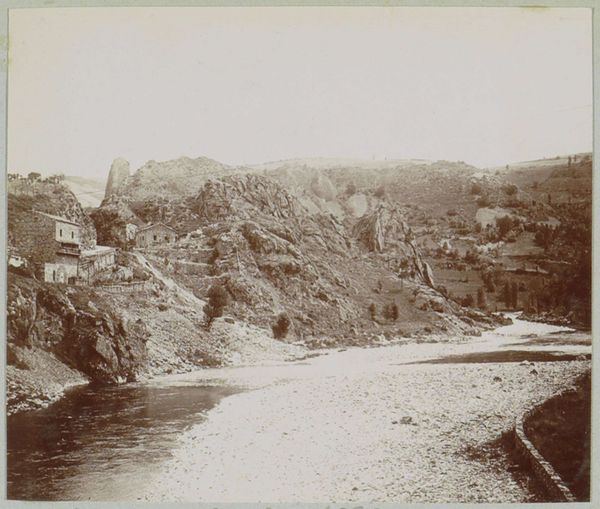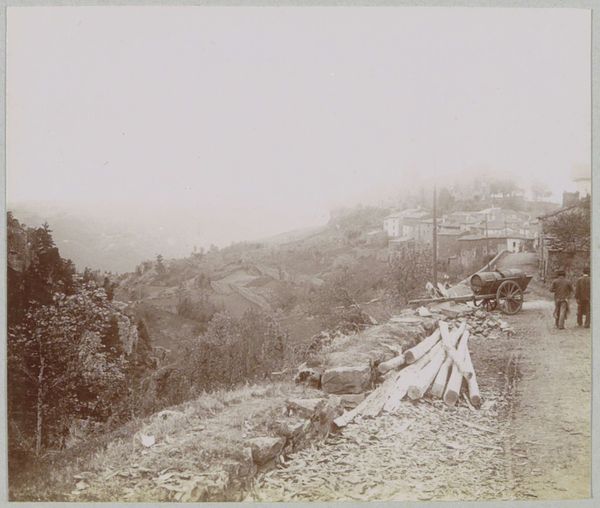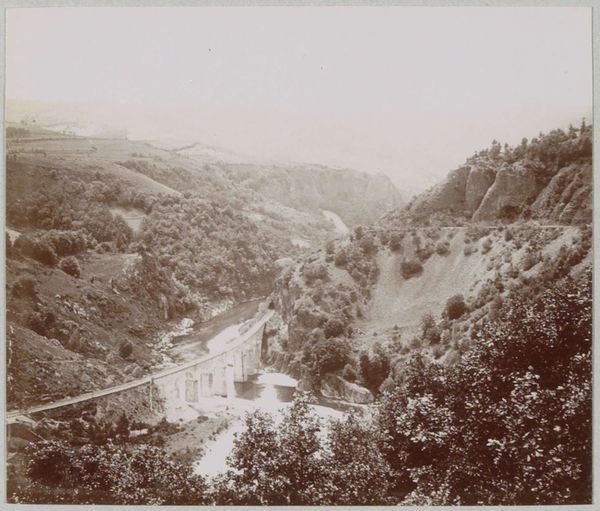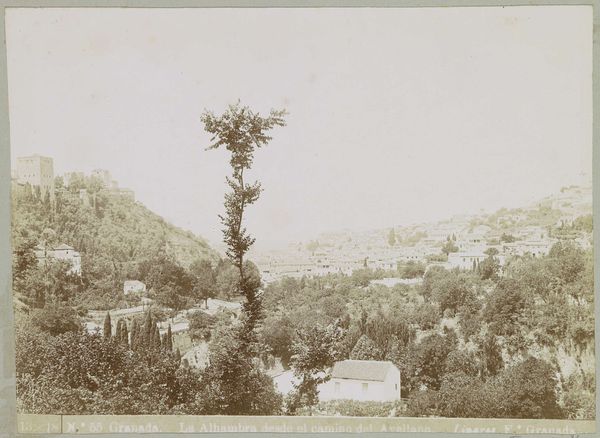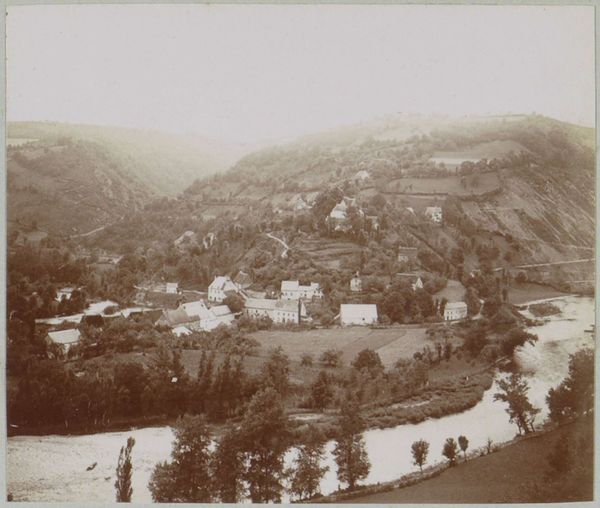
#
scenic
#
countryside
#
nature photography
#
are beginner nature
#
nature
#
outdoor scenery
#
nature friendly
#
nature heavy
#
nature environment
#
scenic spot
Dimensions: height 70 mm, width 82 mm
Copyright: Rijks Museum: Open Domain
Curator: Let's turn our attention to this landscape photograph titled "Gezicht op een rotsformatie in Le Puy-en-Velay," taken in 1902. Editor: Immediately, I'm struck by the overwhelming stillness, the sort of suspended quiet that predates some great upheaval. The muted sepia tones enhance this, almost like looking at a faded memory. Curator: The albumen print, a popular process at the time, contributes to that. The photographic technology and the dissemination of images were rapidly evolving in the late 19th and early 20th centuries, profoundly shaping perceptions of place and the way landscapes were documented and shared, think for example about how colonization profited of photographic technologies. Editor: And the rock formation itself? It dominates the composition but almost seems to watch over the town nestled beside it. I wonder how the photographer felt about its power relative to the built environment. This feels a bit unsettling in an intriguing way, especially thinking about social hierarchies implied here. The silent sentinels guarding human activity? Curator: Exactly. Consider the broader context: the relationship between human settlement and the natural environment was being increasingly interrogated during this era. Le Puy-en-Velay is notable for its volcanic plugs – visually imposing geological features on which religious structures were often built, a sort of material appropriation that should not be dismissed. The church, as an institution, and geological formations like these, played roles in cultural understanding, identity and class distinctions. This is an opportunity to observe nature's interplay with cultural narratives in France. Editor: I see what you mean. It isn't just about capturing a beautiful scene; it’s about presenting a perspective. A visual commentary on power dynamics using landscape as a backdrop. What do you think the photograph would look like if a woman took the shot? How the landscape representation could transform? Curator: Those sorts of questions make for really essential re-readings. It invites critical discourse and awareness around not only representation, but who is in control of those representations and whose voices are silenced. This image serves as a poignant artifact, echoing discussions on cultural interactions, social constructs and the impact of historical viewpoints. Editor: That definitely enriches the entire piece and its overall impact. The sepia tint, the landscape, and even the absence of vivid life serve a greater message now, rather than simply serving as aesthetic components. Curator: Precisely. It highlights that even seemingly simple landscape photography holds profound cultural, and even political, resonances.
Comments
No comments
Be the first to comment and join the conversation on the ultimate creative platform.
